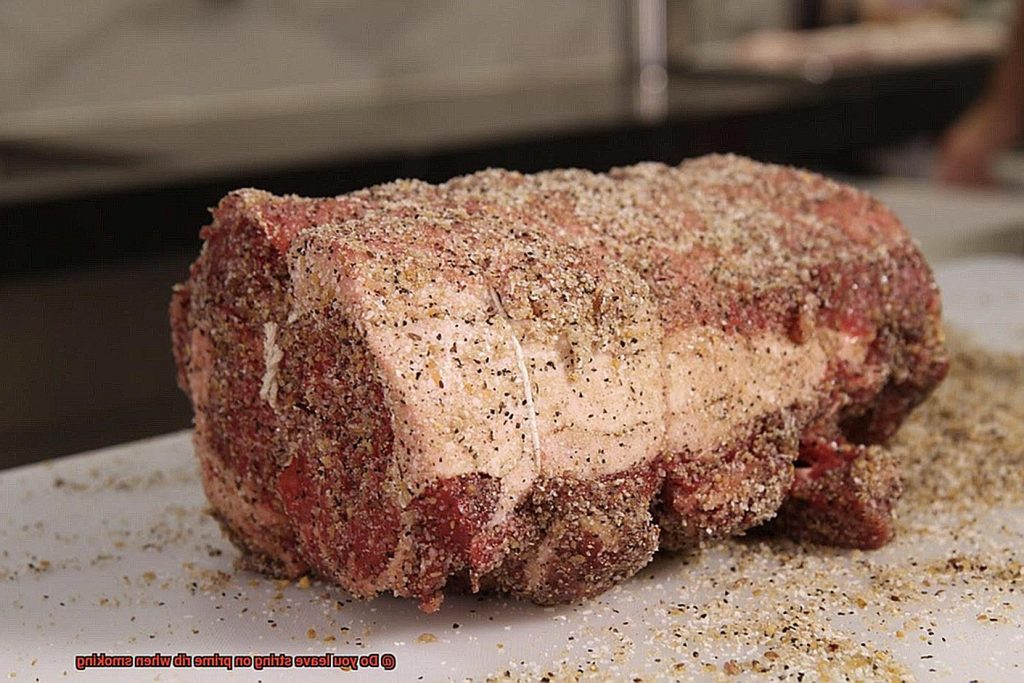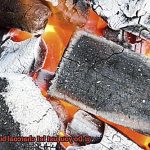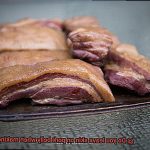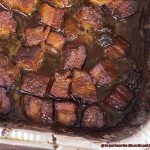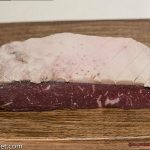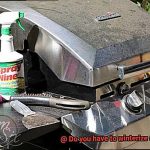Are you gearing up for an epic barbecue party and planning to smoke a prime rib? You’ve made an excellent choice. This cut of meat is juicy, tender, and oh-so-delicious. But before you start smoking, there’s one question that might leave you scratching your head: should you leave the string on or remove it?
It’s a dilemma that has pitmasters and foodies divided. Some swear by taking off the string before smoking, while others advocate leaving it on until the meat is ready to serve. As someone who loves cooking and experimenting with different methods, I’m here to help you navigate through this sticky situation.
Imagine this – after hours of smoking your prime rib to perfection, you’re finally ready to remove the string. But as you pull it off, some seasoning comes off with it, and the surface looks damaged. Panic sets in – have you ruined your dish? Take a deep breath; we’ve got this.
In this blog post, we’ll explore both sides of the debate and help you make an informed decision. We’ll delve into why the string is used in the first place, how it affects the cooking process and ultimately impacts the final product. By the time we’re done here, you’ll be equipped with all the knowledge necessary to decide whether to leave that string on or take it off.
So, grab your apron, get ready for some mouth-watering insights and let’s dive right in.
Contents
Benefits of Leaving String on Prime Rib When Smoking
Smoking prime rib is a culinary art form that requires attention to detail and skill. Among the many techniques used by pitmasters and chefs, leaving the string on the prime rib is a practice that should not be overlooked. Butcher’s twine, made of 100% cotton, is designed to withstand high temperatures without burning or melting and serves as an essential tool during the smoking process.
One of the primary benefits of leaving the string on prime rib when smoking is that it helps maintain the roast’s shape. Prime rib is a large cut of meat that can easily become misshapen during cooking if not secured properly. The string acts as a support system, keeping the roast compact and preventing it from falling apart during the cooking process.
In addition to retaining shape, leaving the string on also simplifies carving. The twine creates natural guides for cutting, making it easy to achieve evenly sized slices. This is especially important when serving groups of people, ensuring that everyone receives a fair share of the delicious meat.
Furthermore, leaving the string on prime rib when smoking can help distribute heat evenly throughout the roast. Smoke and heat tend to penetrate the outer edges of the meat faster than the center, causing uneven cooking. The string holds everything together, allowing heat to penetrate more evenly throughout the meat, resulting in a perfectly cooked roast.
Lastly, leaving the string on prime rib when smoking enhances its flavor profile. As the meat cooks, juices are released and absorbed by the cotton twine, resulting in a more complex and flavorful dish.
While some may find the marks left by the string unappetizing, they can be easily removed after smoking and before serving. Letting the meat rest for at least 10-15 minutes before removing ensures that juices have time to redistribute throughout the meat.
How to Tie a Prime Rib with Butcher’s Twine
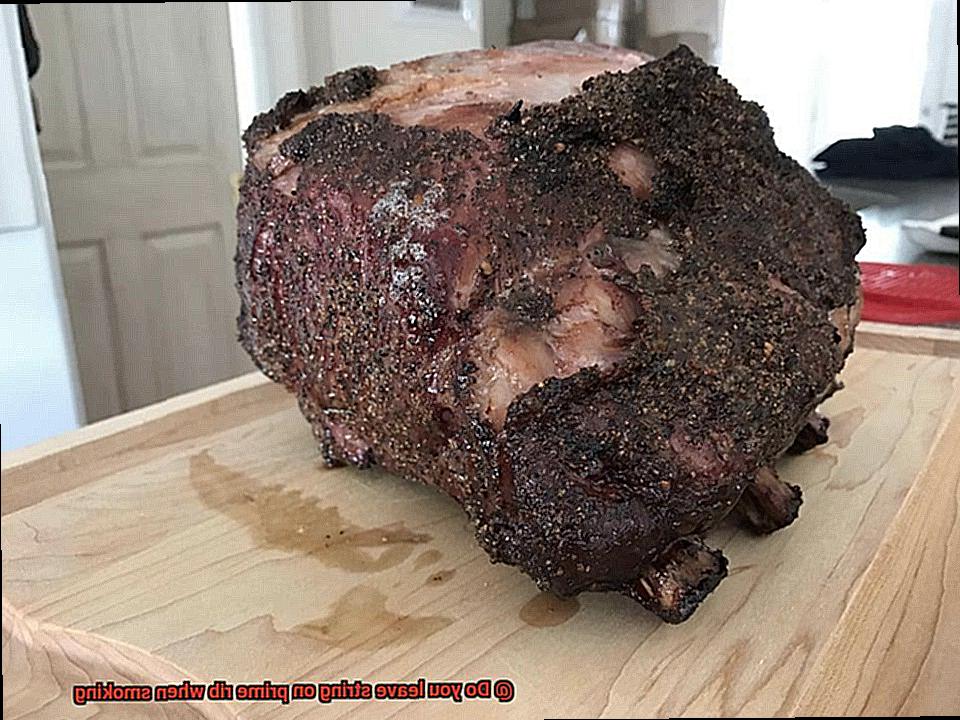
Tying a prime rib with butcher’s twine is an essential step in preparing it for smoking. It may seem like a daunting task, but with a little practice, you can do it easily. Here are five sub-sections to help you understand how to tie a prime rib with butcher’s twine:
Get the Right Twine and Length
Before you start tying your prime rib, make sure that you have enough butcher’s twine to wrap around the entire roast at least three times. It’s also important to choose strong twine that can hold up the weight of the meat.
Trim Excess Fat
Before wrapping the twine around the prime rib, trim any excess fat from the meat to ensure that the twine adheres properly.
Wrap the Twine
Position the twine so that it sits in the natural grooves of the meat. Start by tying a knot at one end of the prime rib and then continue wrapping the twine around the roast lengthwise, spacing each wrap about an inch apart, until you reach the other end. Tie another knot to secure the twine in place.
Don’t Tie Too Tight
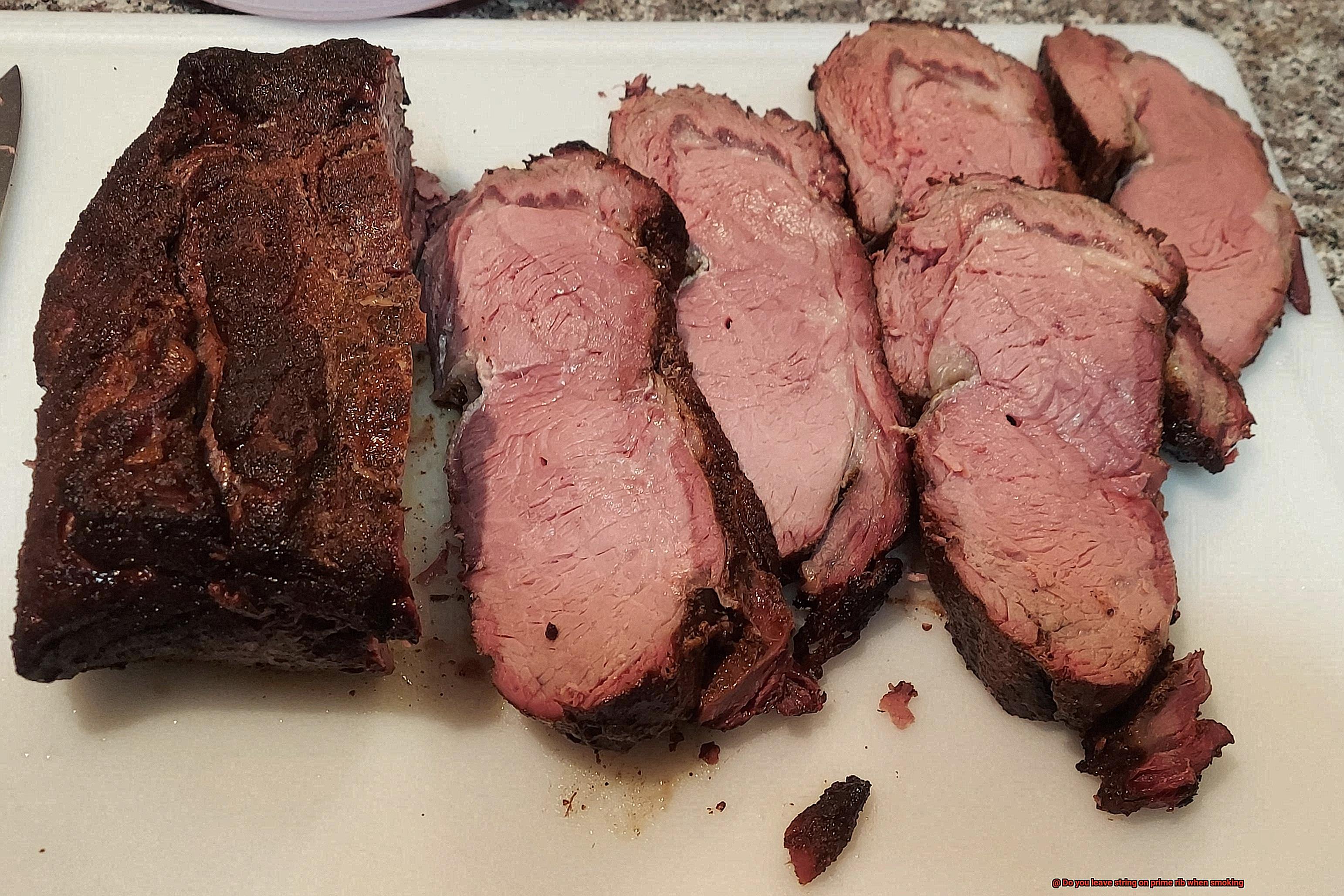
It’s important not to tie the twine too tightly as this can cause the meat to bulge and cook unevenly. Likewise, don’t leave it too loose as this can cause the meat to fall apart. The ideal tension is just enough to hold the meat together without distorting its shape.
Let It Rest
After smoking your prime rib, let it rest for at least 10-15 minutes before removing the twine so that the juices have a chance to redistribute throughout the meat.
How Long Should You Leave the String on During Smoking?
As an expert on this topic, let me assure you that leaving the string on can help maintain the shape of your meat while smoking, but timing is everything.
Think of tying your prime rib with butcher’s twine like giving it a supportive hug. It accentuates the curves, keeping everything in place and preventing uneven cooking. However, leaving the string on for too long can lead to it burning and ruining the taste of your succulent meat. So, how long should you leave it on?
The general rule of thumb is to remove the string once the prime rib has reached an internal temperature of around 120-125°F. This usually takes about 2-3 hours of smoking, depending on the size of your prime rib and smoker temperature. Once the string is removed, you can continue smoking until your desired internal temperature is reached (usually between 130-140°F for medium-rare).
Now, let’s be clear – leaving the string on isn’t necessary. If you’re confident in your ability to shape and tie the prime rib without it, feel free to skip this step altogether. However, if you’re looking for that extra support during smoking, don’t forget to monitor your smoker temperature and internal meat temperature closely to ensure a perfectly smoked prime rib every time.
Potential Drawbacks of Leaving the String On
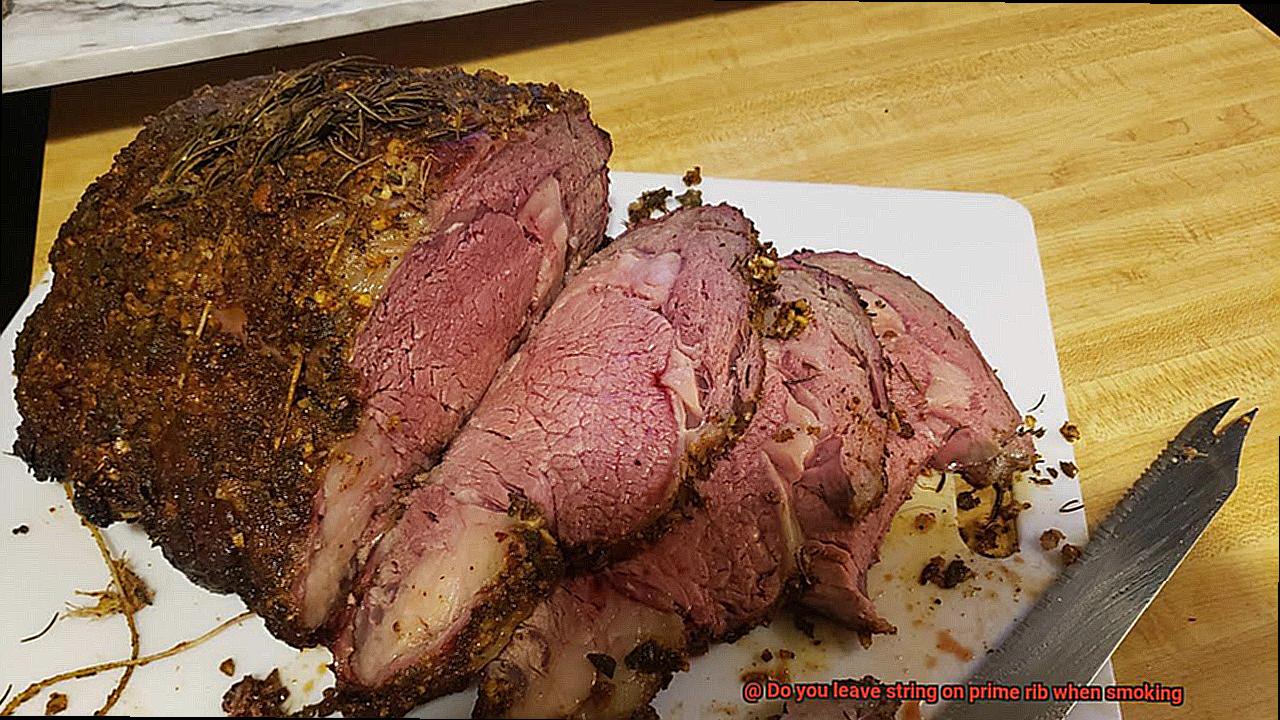
Before you start, make sure you remove the string. Leaving the string on can cause potential drawbacks that may affect the taste and presentation of your meat. Here are some reasons why:
Firstly, the string can cause uneven cooking. Overcooked or undercooked meat is nobody’s favorite. To avoid this, remove the string once the internal temperature reaches 120-125°F.
Secondly, leaving the string on can affect your meat’s appearance. Don’t let your beautifully smoked prime rib turn into a shapeless blob on a plate. Removing the string will help maintain its shape, resulting in an eye-catching presentation that will make your guests drool.
Moreover, leaving the string on can also affect the flavor and tenderness of your prime rib. The string can trap moisture and juices inside, leading to a dry and tough piece of meat that lacks flavor. Don’t ruin all your hard work by leaving the string on and ending up with a less tasty prime rib.
Lastly, leaving the string on can make seasoning your prime rib more challenging. If you leave the string on, the seasoning may not penetrate through it evenly, resulting in an uneven distribution of flavors. To avoid this, simply remove the string before seasoning and tie it back up after.
Tips for Removing the String After Smoking
Smoking a prime rib is an art, and tying it up with butcher’s twine before smoking helps it keep its shape and cook evenly. However, once the smoking process is complete, it may leave you wondering whether or not to remove the string before serving. Here are some helpful tips on how to remove the string after smoking a prime rib:
Tip 1: Let the Meat Rest
Allow the meat to rest for at least 15 minutes after removing it from the smoker. This crucial step allows the juices to redistribute throughout the meat and helps it retain its moisture. Resting also makes the meat easier to handle without tearing it apart.
Tip 2: Use a Sharp Knife
To remove the string, use a sharp knife to carefully slice through the twine and remove it from the prime rib. Slice away from yourself to avoid any accidents, and be sure not to cut into the meat. Alternatively, you can use kitchen scissors or a sharp pair of pliers to cut through the string.
Tip 3: Use Butcher’s Twine or Cooking Bands
When smoking prime rib, it is recommended that you use butcher’s twine or cooking bands instead of regular kitchen string. These are heat-resistant and designed specifically for use in cooking and smoking meats. They are also easier to handle and tie more securely than regular kitchen string.
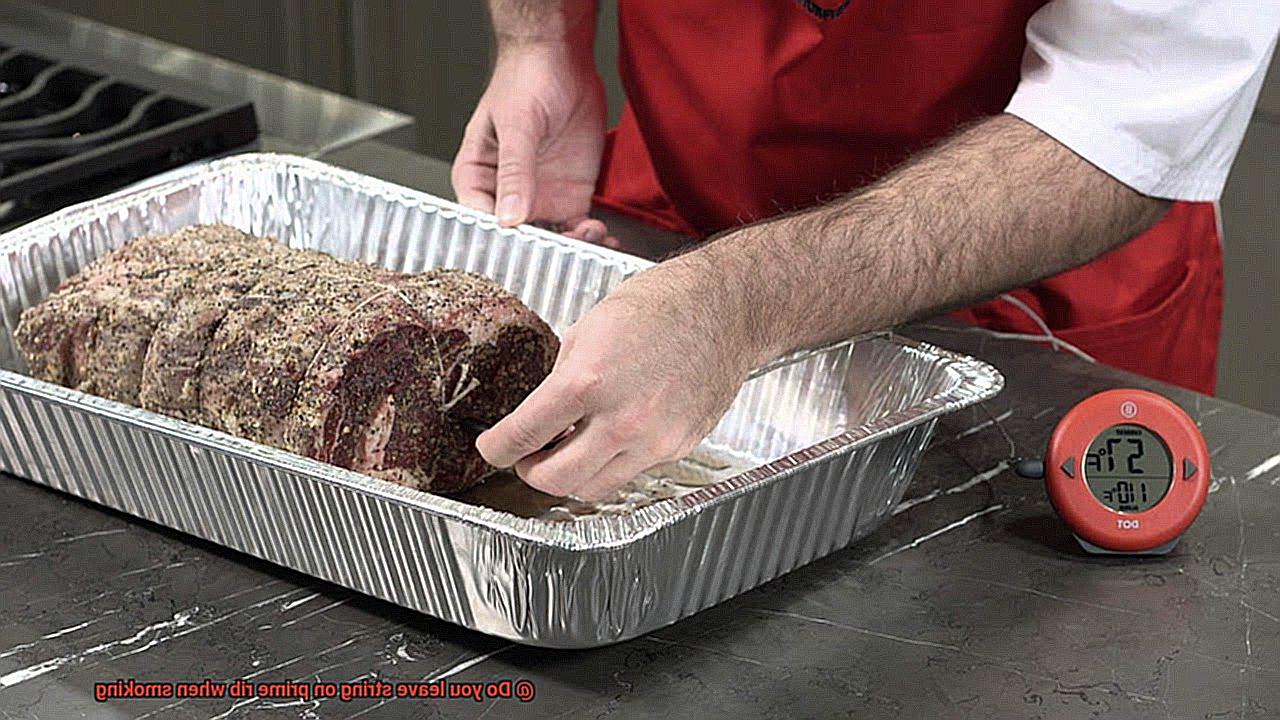
Tip 4: Be Careful
Be extra cautious when removing the string so as not to damage the meat. Leaving the string on can help keep the meat in shape and prevent it from falling apart during smoking. If you choose to remove it, do so carefully to achieve a clean and effortless removal.
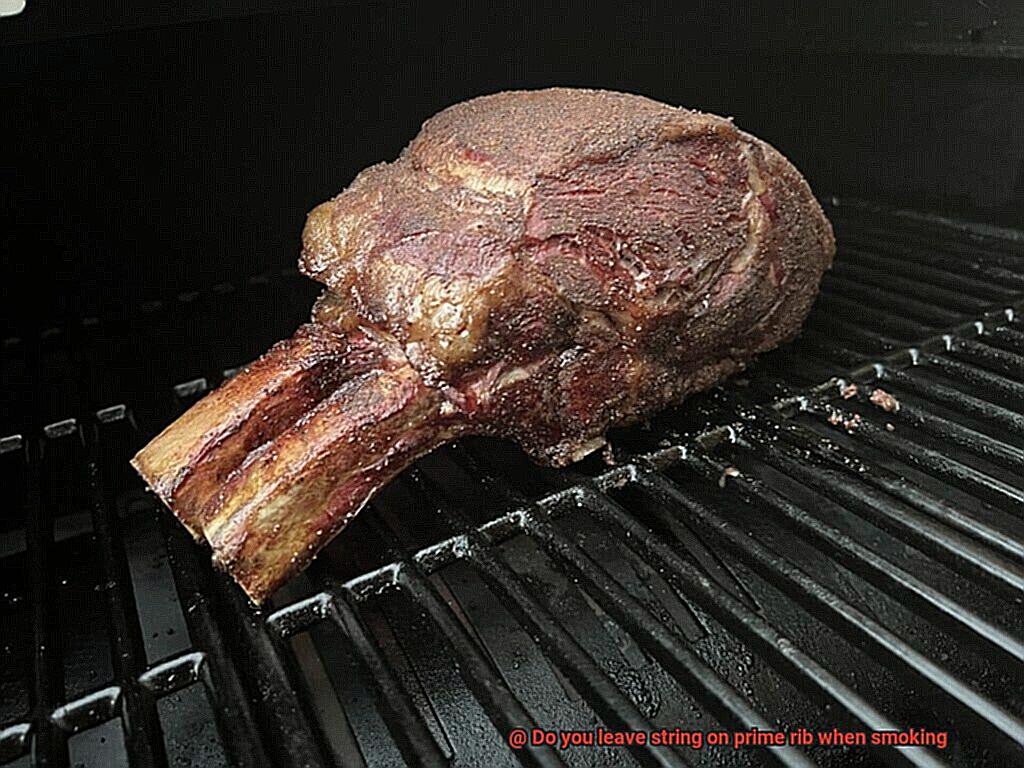
Tip 5: Improve Presentation and Serving Ease
Removing the string from a smoked prime rib improves its visual appeal and makes carving and serving much easier. Leaving the string on can affect its presentation and make it more challenging for guests to serve themselves.
How to Tell if Your Prime Rib is Cooked Properly Without the String?
Cooking the perfect prime rib is an art form that requires precision and patience. While many people rely on the string to hold their roast together during cooking, it’s important to know that leaving the string on can be a safety hazard. To avoid any potential accidents, it’s best to remove the string before cooking and use alternative methods to determine if your prime rib is cooked properly. Here are some ways to tell if your prime rib is cooked perfectly without the string.
Using a Meat Thermometer
One of the most reliable ways to determine if your prime rib is cooked properly is by using a meat thermometer. This tool allows you to check the internal temperature of the roast, ensuring that it’s cooked to your desired level of doneness. For medium-rare prime rib, aim for an internal temperature of around 135°F (57°C). For medium, aim for 145°F (63°C), and for well-done, aim for 160°F (71°C).
To use a meat thermometer, insert it into the thickest part of the roast, making sure not to touch any bones or the cooking surface. Wait for a few seconds until the temperature reading stabilizes, and then remove the thermometer from the roast. If the temperature is below your desired level of doneness, continue cooking the roast until it reaches the correct temperature.
Using the Finger Test
Another way to tell if your prime rib is cooked properly without relying on the string is by using the finger test. This method involves pressing your finger against the roast to gauge its level of doneness based on how firm or soft it feels. For medium-rare prime rib, the roast should feel like the fleshy part of your palm when you touch your thumb to your index finger; for medium, it should feel like the fleshy part when touching your thumb to your middle finger; and for well-done, it should feel like the fleshy part when touching your thumb to your pinky finger.
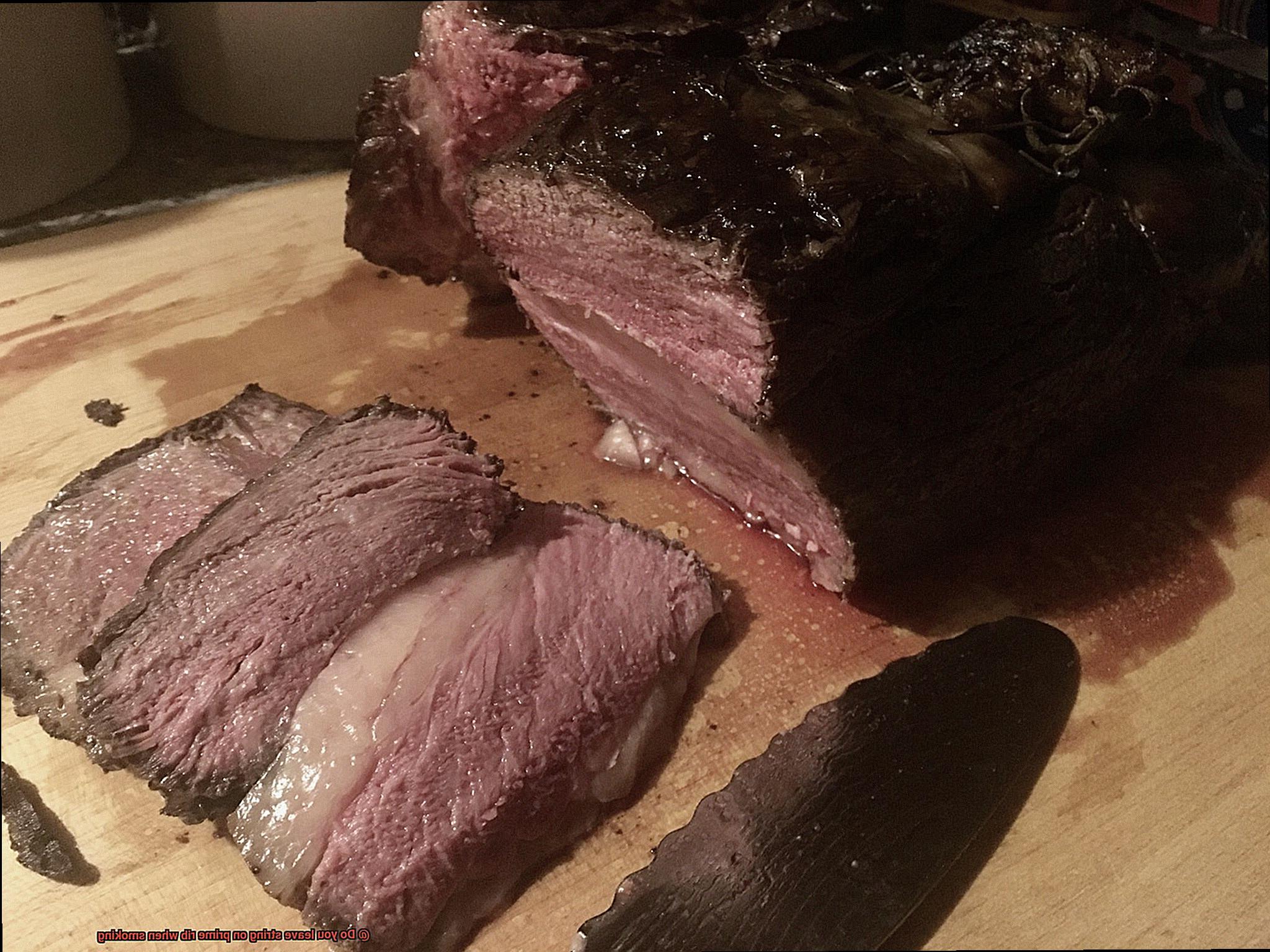
However, keep in mind that this method takes practice and may not be as accurate as using a meat thermometer. It’s always better to use both methods to ensure that your prime rib is cooked perfectly.
Letting it Rest
No matter which method you use to test for doneness, it’s important to let your prime rib rest for at least 15-20 minutes after cooking before slicing into it. This allows the juices to redistribute throughout the meat and prevents them from spilling out when you cut into it. As a result, your prime rib will be juicier and more flavorful.
Removing the String
After letting your prime rib rest, remove any remaining string before slicing and serving. This ensures that you’re not left with any unwanted pieces of string in your serving. Additionally, removing the string allows you to see the beautiful crust that has formed on the outside of the roast.
Different Types of Wood Chips for Smoking Prime Rib
Prime rib is a cut of beef that deserves to be elevated to new heights, and smoking it with wood chips is an excellent way to do so. However, the choice of wood chips can make or break the dish, as different woods impart different flavors and levels of smoke intensity. In this article, we’ll explore five popular options for smoking prime rib and their unique flavor profiles.
Hickory
Hickory is a classic choice for smoking beef and other hearty meats. It has a strong and smoky flavor that pairs well with the rich taste of prime rib. However, it’s important not to use too much hickory as it can easily overpower the meat and leave it with a bitter taste.
Mesquite
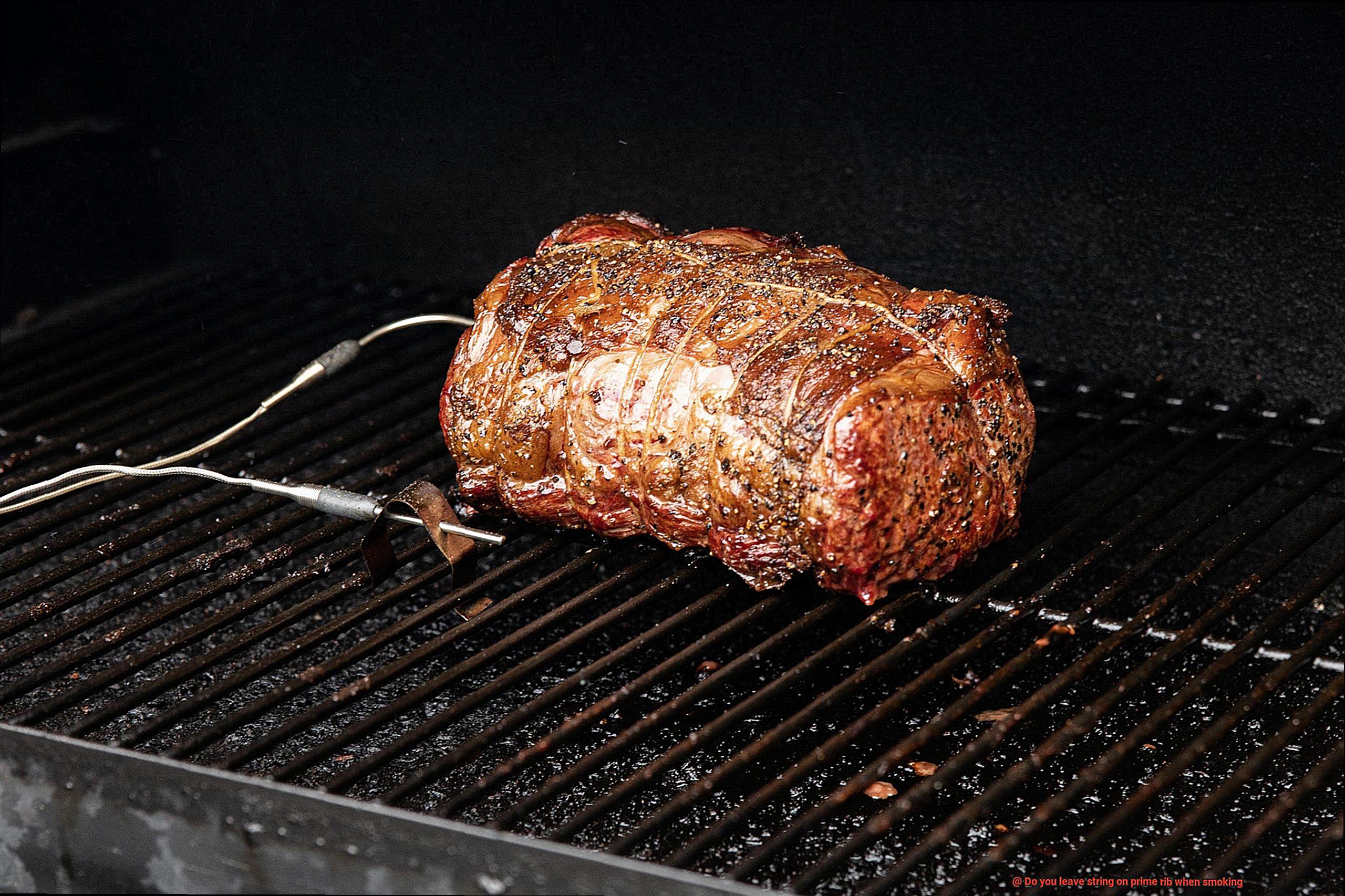
Mesquite wood chips have a more intense flavor than hickory, with a slightly sweet taste that complements the richness of prime rib. However, it’s crucial to use mesquite sparingly as it can quickly overpower the meat if used in large quantities.
Applewood
For those who prefer a milder smoke flavor, applewood is an excellent choice for smoking prime rib. It has a sweet and fruity flavor that can enhance the natural flavors of beef without being too overpowering. Plus, it adds a subtle smoky flavor compared to hickory and mesquite, making it perfect for those who prefer a less intense smoky taste.
Cherrywood
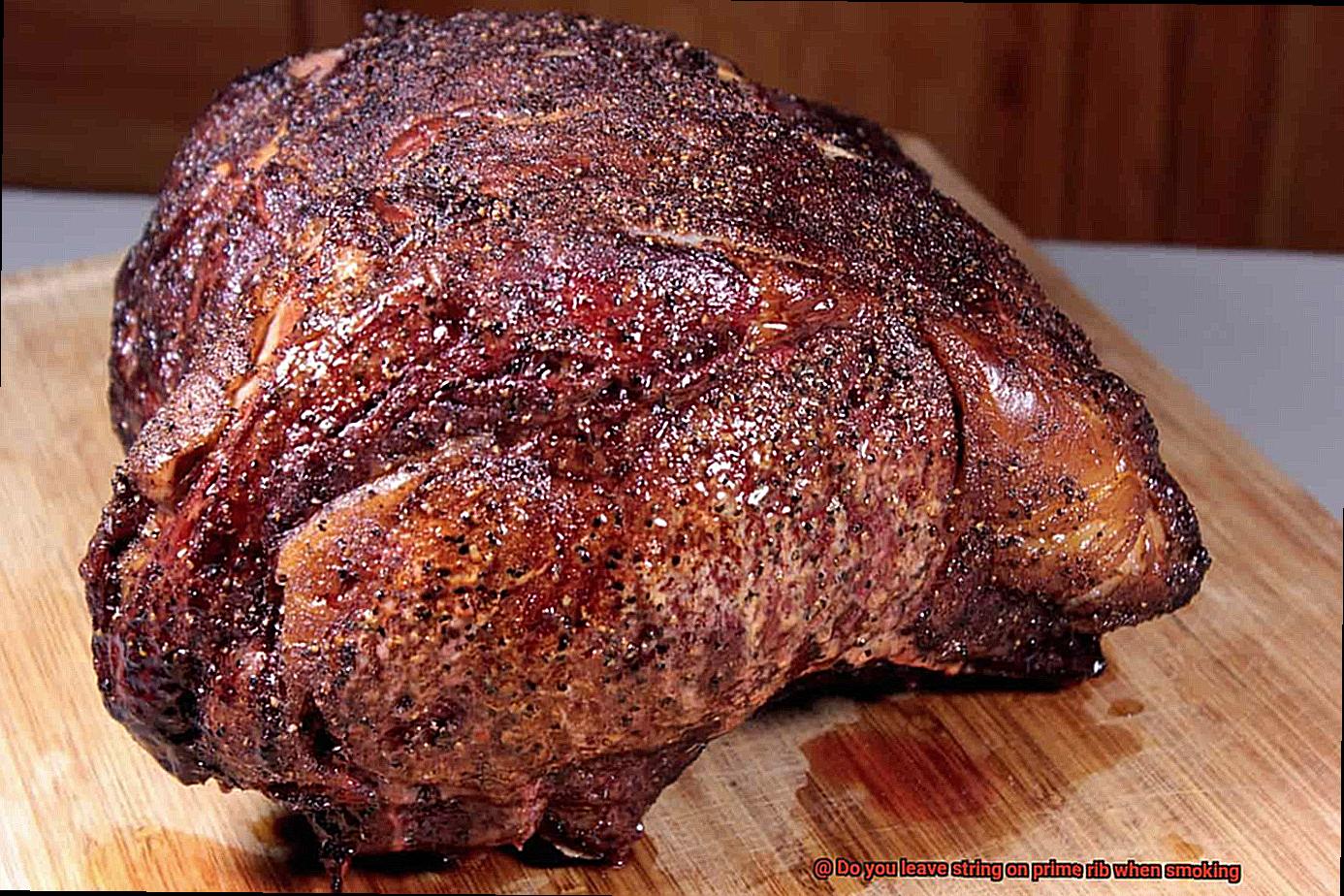
Cherrywood is another fruitwood that works well with prime rib. It provides a mild and slightly sweet flavor that complements the beefy taste without overpowering it. Additionally, cherrywood adds a beautiful reddish color to the meat when smoked, making it visually appealing as well.
Oak
Oak wood chips are a versatile option that can be used for smoking prime rib. They have a subtle smoky flavor with a slightly nutty taste that can enhance the natural flavors of the meat without overpowering it. Oak wood chips are perfect for those who want to add depth to the overall flavor profile of their prime rib.
When choosing wood chips for smoking prime rib, it’s crucial to consider the intensity of the smoke and how it will complement the natural flavors of the meat. Soaking your wood chips in water for at least 30 minutes before using them can prevent them from burning too quickly and producing bitter smoke.
How to Maintain Flavorful Juices While Smoking Prime Rib
Smoking a prime rib is a delicious way to cook this tender cut of beef, but it can be tricky to maintain the flavorful juices within the meat. Here are some tips and tricks to help you achieve a mouth-watering and juicy prime rib:
Choose a quality piece of meat
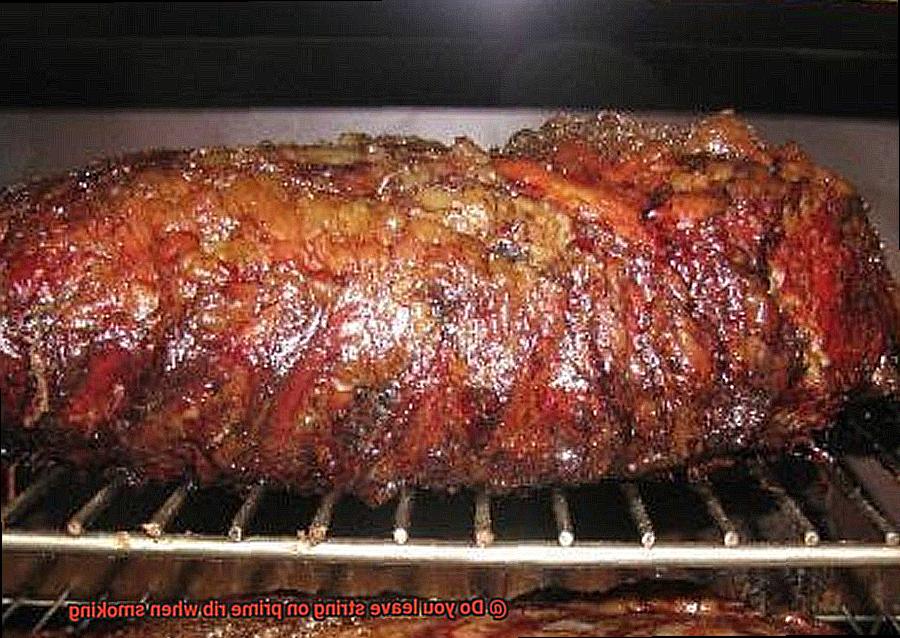
The quality of the meat you choose is crucial in maintaining its juiciness and flavor. Look for prime or choice grade beef with good marbling. This will ensure that the meat is tender and juicy when cooked.
Season properly
Seasoning the prime rib before smoking is important to enhance its natural flavor without overpowering it. A simple seasoning of salt, pepper, and garlic powder will do the trick. Be sure to rub the seasoning into the meat thoroughly for even distribution.
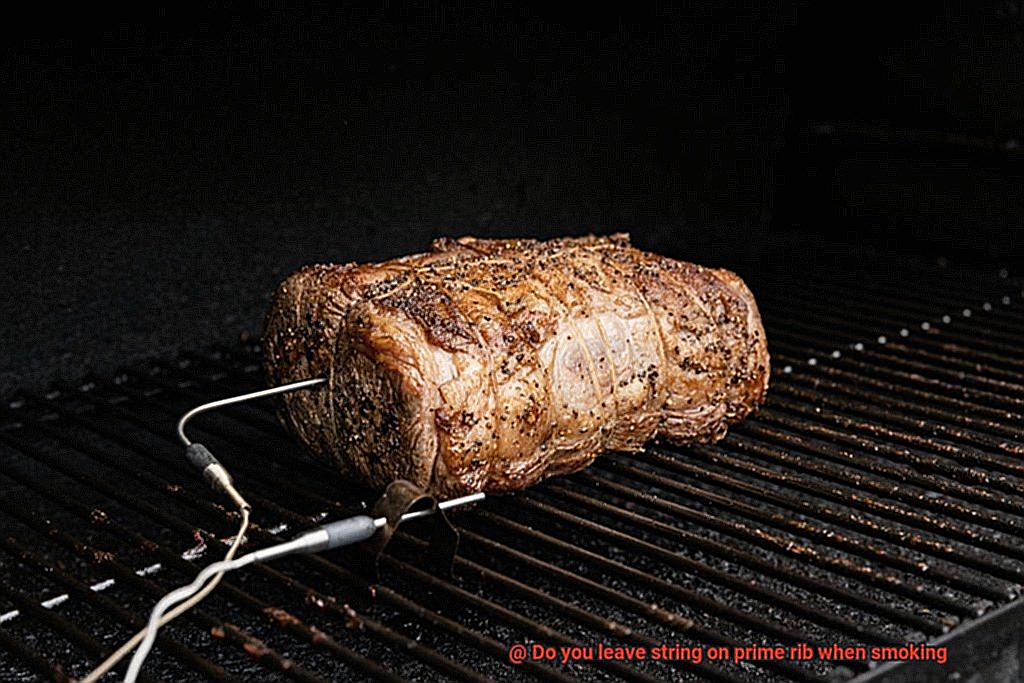
Use a low and slow cooking method
Cooking the prime rib at a low temperature for several hours allows the meat to cook slowly and retain its juices. Aim for a temperature between 225-250 degrees Fahrenheit until it reaches an internal temperature of 120-130 degrees Fahrenheit for rare or medium-rare.
Baste with beef broth and butter
Basting the meat with a mixture of beef broth and butter every hour adds moisture and flavor to the meat as it smokes, keeping it juicy and succulent.
Let the meat rest
Letting the meat rest before carving allows the juices to redistribute throughout the meat, resulting in a more tender and juicy prime rib. It is recommended to let the meat rest for at least 20 minutes before slicing.
Leave the string on
The string, also known as butcher’s twine, helps keep the shape of the meat intact while cooking and prevents the juices from escaping. This is especially important for larger cuts of meat like prime rib which can easily become misshapen during cooking if not properly tied.
Choose the right wood chips
Choosing the right wood chips is crucial in maintaining the meat’s natural flavor. Hickory, mesquite, and oak are popular choices that add a smoky flavor without overpowering the taste of the meat.
Conclusion
When it comes to smoking prime rib, the question of whether or not to leave the string on can be a source of confusion. But fear not, dear reader, for there is a simple answer: it depends. If the string is made of cotton or other natural fibers, it’s safe to leave on during smoking. However, if the string is synthetic or coated in plastic, it should be removed beforehand.
But why even bother with the string in the first place? Well, it helps keep the meat in its desired shape while cooking and can also help distribute heat evenly throughout the roast. Plus, removing the string after smoking can result in a messier presentation and potentially cause the meat to lose some of its juiciness.
In conclusion, whether you leave the string on or take it off when smoking prime rib ultimately comes down to personal preference and safety considerations.

